![]()
Maybe your experience is similar.
It's probably an hour after I intended to show up, but I'm here. I park in a different lot than where the tailgate is located, but while that gets a bit frustrating at times, it does allow me to take in the scene as I hike to our chosen spot. On my walk, I can spy on tailgate food, take in bits and pieces of conversations and get an early feel for what attendance is going to be like ("At three hours to kickoff, this lot should be much more full than this...").
Right now, it's just beer, even at 8:00 a.m.
Within 30 seconds of my arrival, Seth hands me a beer, as he has for just about every tailgate I've ever attended. He always gets here on time. At Homecoming it's all about the Bloody Mary with the infused vodka. After Halloween, I'll bring in growlers of the local pumpkin ale. Right now, it's just beer, even at 8:00 a.m. (if your team is unlucky enough to draw an 11:00 a.m. start time). The bottle is open, there are hours before kickoff, and it's time to settle in. I'm not thinking about numbers.
It's the same people, the same chairs, and the same tent with the same team colors each year. The grilling equipment gets upgraded from time to time, and lord knows there are more children here than there used to be, but there is comfort in familiarity. I do not overtly fear change in my day-to-day life, but I like my tailgates the way they are. When the weather cooperates, there is nothing more relaxing. And it's still pretty good when the weather is temperamental.
Print PRINT**********
In Lincoln, Nebraska, 85,000 people make an incomprehensible amount of noise watching on an enormous jumbotron as 100 young men walk through a hallway.
In Columbia, South Carolina, old Southern men yell and wave towels to the pulsating beat of a nearly 15-year old song by Finnish trance DJ Darude.
In Blacksburg, Virginia, engineering majors make an equal amount of noise following the opening notes to a classic rock song from Los Angeles-based Metallica.
In Madison, Wisconsin, after 45 minutes of play, the home crowd jumps along in disturbing unison to a decades-old song from faux-Irish rap group House of Pain. It is so fun you can occasionally catch members of the visiting team joining in on the sideline.
In Auburn, Alabama, a town of 53,000, up to 87,000 people show up to watch an eagle fly around a stadium. A retired eagle still hangs out on campus. (The team's nickname is the Tigers, by the way.) In Tallahassee, Florida, a student is given a scholarship to dress up as a Seminole chief, ride into Doak Campbell Stadium on a horse named Renegade, and plant a spear into the ground.
In Starkville, Mississippi, home fans clang cowbells incessantly, and they are the only fans in the country allowed to do so. This is a big deal. In Stillwater, Oklahoma, the Cowboy Marching Band plays "The Waving Song" after the home team scores. The fans don't clap along, of course; they wave.
In Clemson, South Carolina, the home team pats a rock and runs down a hill to thunderous applause. In College Station, Texas, proud Aggies cheer along with male yell leaders dressed like milkmen, repeating chants that you don't understand and nodding quietly to the collie graveyard on the north end of the stadium.
In Shreveport, Louisiana, local Louisiana State fans show up at the Independence Bowl, a game in which their team isn't playing, just so they can get some tailgating practice. In Boise, Idaho, Utah State beats Toledo in the Famous Idaho Potato Bowl. The trophy they receive is basically a crystal bowl of potatoes. Winning this ridiculous trophy is one of the program's finest moments.
In stadiums throughout the country, men wearing different-colored shirts, with perhaps incredibly similar backgrounds, yell at and/or tussle with each other because of the actions of a bunch of 19-year olds wearing similar colors. And in stadiums throughout the country, men wearing the same-colored shirts yell at and/or tussle with each other because of the plays being called by a well-paid man in a box across the stadium from them.
It is messy and absurd. It is nonsensical. It is wonderful. It is always changing, and it never changes.
Welcome to college football, where this all makes sense. From the tunnel walk at Nebraska, to "Sandstorm" at South Carolina, to "Enter Sandman" at Virginia Tech, to "Jump Around" at Wisconsin. From War Eagle at Auburn to Chief Osceola at Florida State. From CLANGA CLANGA CLANGA at Mississippi State to silent waving at Oklahoma State. From drunk LSU fans grilling meat for practice to jubilant Utah State fans cheering as their head coach holds a potato bowl over his head.
In the real world, you aren't allowed to dress up like a Native American and throw a spear into the ground. In college football, you can pay for an education doing this.
College football is the world's biggest insiders' club, a sport with too many inane, insanely enjoyable traditions to count. It is off the beaten path. It is messy and absurd. It is nonsensical. It is wonderful. It is always changing, and it never changes.
**********
A guy named Michael down the line of cars has a deep fryer. He lives six hours away, but he comes in for every home game. He makes most road games, too, but the home games are special. "I have friends six times a year," he says. We talk about the game. I do not reference success rates, or leverage, or points per play. Maybe he asks me what "the numbers" say about this one, but he's really just asking who I think is going to win.
The air smells like grass and fried meat. The walk to the stadium from our lot is a nice one: mostly downhill (which means mostly uphill after the game, I guess), past the basketball arena (a nice Porta-Potty alternative), through the high-roller donor lot, past the buses blaring the same Jock Jams CD for nearly 20 years running, and down the drive toward the stadium where, if we time it just right (and we usually do), the marching band is serenading the crowd and making its way into the stadium like we are.
Kids and families stop to watch and listen as we weave through them. Some old alum is attending his 300th home game. Some 3-year-old, hypnotized by the band or the mascot, is attending his first. So, so many people attend college football games in this country; all of them have their own habits, goals and levels of alcohol and food intake. I probably do not have much in common personally, or politically, with most of the people around me, but right now we are wearing the same colors. In about 30 minutes, we'll be singing the same song. Hopefully at some point we'll be high-fiving.
**********
Buy the book
This is the complete first chapter of Bill Connelly's book "Study Hall: College Football, Its Stats and Its Stories", an accessible, enjoyable look at the world of college football through the eyes of coaches, writers, and numbers geeks. The first of its kind, this book explores college football's current events, numbers, and tactics from a number of perspectives. It is an attempt to bridge the gap between the analytical side of the game and its real-life application. So many of us love this ridiculous sport; Study Hall gives us ways to love it even more.
Purchase it at Amazon or CreateSpace.
If you count yourself among the millions of college football obsessives, chances are good that there was a moment when the bug bit you. In Alabama, or Oklahoma, or Nebraska, perhaps that moment was simply your birth. But maybe you were a Northwestern student during the Wildcats' Rose Bowl run in 1995. Maybe you attended Virginia when the Cavaliers made a miraculous (and brief) run to No. 1 in 1990. Maybe you were attending Missouri 17 years later when the same thing happened. Maybe you just got sucked into the game - the fight songs, the unexpected passion, the combination of chess and brutality, the vulnerability associated with life as an amateur - at any random school. Or maybe you were simply a six-year-old watching Doug Flutie complete a Hail Mary live on television one Saturday night in 1984.
College football is almost literally off the beaten path. There isn't much of a presence for this sport in New York City, for example, and while there are games in or around Chicago and Los Angeles, those aren't what you would naturally call college football towns. Instead, the capitals of college football require a bit of a drive, even from smaller-market cities. Tuscaloosa, Alabama, is an hour from Birmingham. Lincoln, Nebraska, is an hour from Omaha. Norman, Oklahoma, is about half an hour from Oklahoma City. Eugene, Oregon, is almost two hours from Portland. Ann Arbor, Michigan, is about 45 minutes from Detroit. Baton Rouge is about an hour and a half from New Orleans. And, of course, South Bend, Indiana, is about an hour and a half from Chicago. You have to find college football; it's probably not going to find you. But oh, when you find it, it's all over for you.
"Sports define people in a given culture," notes Chris B. Brown of the wonderful website Smart Football. "If you grew up in the New England area, perhaps you grew up in a community with a pro football focus. But if you grew up in Alabama, it was all college. For me, I grew up playing the sport, and college is probably the best blend of the things that make the game meaningful - doing it for team reasons, doing it in support of each other, working for a singular goal, not just for money or recognition, plus the noble, ‘get knocked down and get back up' part - and the strategic side of it. With 100-plus teams, you get a lot more diversity, more effective problems.
"There is at least a little insanity involved in college football obsession, in the way it makes you think and feel," Brown continues. "Often, when you're rooting for a Purdue [his school] or a Missouri [mine], it's because it connects you with some community or cultural experience - four years of college, tailgating with friends, something you can continue to do each year. If you're a part of the Notre Dame or Alabama fan base, maybe you feel connected to something that's larger than you. Connecting to that gives you a better sense of who, and where, you are."
"I always laugh when people go to their first real college football game, maybe an SEC game" says Sports Illustrated's Andy Staples, "and they see how different it is from the NFL. If you go to an Alabama-LSU game in Baton Rouge, there's really just nothing in the world that compares."
CBS Sports' Bruce Feldman agrees. "It's always cool just to get down on the field late in a game, when things are ramping up. It always feels new. I love seeing when Oregon lets the students in; you're looking down from the press box, and it's pretty picturesque, and you have these students sprinting down the steps trying to get to their seats. Sometimes it's raining, and you think ‘This is a bad idea.' And when Virginia Tech comes onto to the field, and you hear the sound of ‘Enter Sandman' starting up? I get goose bumps every time."
For Steven Godfrey, a writer for SB Nation, it took a little while to get bitten. "I grew up in an FBI family, and we moved a lot. We went to a Marshall game here, a VMI game there, but it didn't really click. I finished high school in Jackson, Mississippi, and we went to the Egg Bowl. It was there that I began to see the disproportionate amount of passion to reason, the amount of time people spend obsessing over this. It was an immersion process.
"You have people with different coal politics in the West Virginia-Marshall rivalry. You've got Civil War ties to Kansas-Missouri. The stakes are just different in college football."
Godfrey later came back to Oxford to finish his degree at Ole Miss and decided to give beat writing a chance. His first job: covering Ole Miss for the 2003 season. One of the most dominant programs in the country in the late 1950s and early 1960s, Ole Miss had not been ranked higher than 15th in the AP Poll since 1970 and hadn't won a conference title since 1963. But behind quarterback Eli Manning, the Rebels made a charge toward glory in 2003 ... eventually. They first fell to Memphis and Texas Tech and began the season 2-2. But they beat No. 24 Florida and No. 21 Arkansas, surged to No. 15 in the polls, and found themselves undefeated in conference play when No. 3 LSU came to town on November 22. A win would give them the SEC West title and a chance at the SEC championship.
"Ole Miss-LSU was the perfect college football experience," says Godfrey. "I remember thinking, ‘This is the most passion I've ever seen from a group of people about anything in my life.' If I ever get football fatigue, I always remember that. Their passion is my passion, I guess.
"Ole Miss was lining up to kick a field goal at the end of the game, and a CBS production guy comes running by me. They were taking their cameras off of the goal posts. I said, ‘What are you doing? Why are you doing that?' He said, ‘Look around. This place is about to fucking explode.'"
"My dad is from Louisiana, and my mom is from Georgia. College football provided context for every aspect of my life." C.J. Schexnayder is discussing how he never really had a chance in avoiding the college football bug. Schexnayder, an Alabama fan who has written for sites like Roll Bama Roll and [my own] Football Study Hall, loves the backstories almost as much as the game itself. "The historical and sociological aspect of college football is just fascinating," he says.
Every program has an Immaculate Reception, a play or a game that changed its fortunes.
"So many plays have an ‘Immaculate Reception'-like impact on so many fan bases and cultures," Schexnayder notes. He's right. The NFL has a storied history, with plenty of crazy, fate-changing plays like Franco Harris' deflected-catch-and-run from the 1972 AFC playoffs. But in sheer quantity, it cannot hold a candle to college football. Every program has an Immaculate Reception, a play or a game that changed its fortunes (for better or worse), a near-miss that still hurts 40 years later, a great play that is still celebrated 20 years later. Ask a Florida State or Miami fan about Wide Right I, Wide Right II, Wide Right III, or Wide Left. Ask a Georgia fan about Run, Lindsay, Run. Ask an Arkansas fan about Right 53 Veer Pass. Ask a Missouri fan about the Fifth Down or the Flea Kicker. Ask an Alabama or Auburn fan about Punt Bama Punt. Ask a Nebraska fan about Tommie Frazier's run or Johnnie Rodgers' punt return. Ask an Ole Miss fan about Billy Cannon. Ask a Texas fan about Michael Crabtree. Et cetera. You'll never actually learn about every incredible moment, every incredible game, every classic gut punch. There are just too many of them.
"As I've gotten older, and I've read more books and talked to more people," says Brian Fremeau of Football Outsiders, "the history of college football that I have come to understand more fully has produced such a rich culture, richer than what I would call the ‘sterile' culture of professional sports. There are these great little stories from every season, and they have been happening for more than 100 years. People want to tell you about this amazing little nugget of a story from 60 years ago. People in a pro sport maybe talk about records or the team that held the Lombardi Trophy so many years ago. But they don't really share the stories that build up to a ‘This is why we rally around this team' conclusion. The little stories are what make this such a passionate sport."
At the same time, there are bigger, broader stories, which is another draw to college football for football academics like Schexnayder. "Football allows us to talk about complex cultural issues in a safer, less threatening way. You can see what's happening socially in the country through college football."
Football was a backdrop for the desegregation battles of the 1960s, from the fight over James Meredith's enrollment at Ole Miss in 1962 to the integration of Alabama's football team (and Arkansas', and Texas') a few years later. College football is, like politics, local. And a look through time at your team's history will tell you so much about your school's, your town's, and your state's history as well.
2013 season preview
![Usatsi_6734116_medium]() (USA Today Images)
(USA Today Images)I began writing about college football for Football Outsiders in September 2008. My job was to talk about the numbers I had begun to play with over the previous year or two, but I wanted to make sure I knew what I was talking about when it came to college football as a whole - its traditions, its history, its rivalries, its collective joy and bitterness. This didn't seem like a difficult task; I had obsessed over the sport since I was about three years old.
I grew up in Oklahoma, where college football is basically the pro sport of choice. Some relatives of mine were the type of obsessive OU fans that made me both revere them and despise them. I remembered the controversial tie between OU and Texas in 1984, and people talked about the Sooner Schooner's premature celebratory arrival onto the Orange Bowl field (and subsequent penalty) for years. I knew just about every player on Oklahoma's 1985 national title team. Jamelle Holieway was my first official favorite player.
I had the Heisman winners memorized going back a decade or two, and I could recite for you national title winners like they were Super Bowl champions. I knew who the All-Americans were, I knew where all the top NFL players attended school, and my love for college football only grew when I began attending major (sometimes) college games at Missouri in the late 1990s. And a decade later, I was getting paid a little bit to write about this sport and its numbers? This was going to be great.
I began to snatch up every college football book I could think of on eBay and Amazon.com. I read everything Dan Jenkins ever wrote for Sports Illustrated. I took in the known classics and the out-of-print, only-locals-will-probably-care autobiographies of successful coaches (John Vaught's Rebel Coach is my favorite). I recorded and watched just about every old college football game ESPN Classic would show and complained when they didn't show nearly enough variety.
After nearly three decades as a college football obsessive, I came to realize something during this immersion process: I didn't know shit about college football.
I knew about Oklahoma, Nebraska and the Big 8. I knew about Bud Wilkinson and Barry Sanders and Sal Aunese and the tunnel walk in Lincoln. I knew everything there was to know about my alma mater's football program, from Don Faurot creating the Split-T (and teaching it to future Oklahoma coach Bud Wilkinson during World War II), to Dan Devine nearly winning a national title in 1960 (damn Kansas beating Ol' Mizzou with an ineligible player), to the big upset wins (and ridiculous upset losses) of the 1970s, to the cratering of the 1980s and the early 1990s, to the Fifth Down, to the Flea Kicker (which I had the honor of seeing in person).
I didn't, however, know about how dominant those late 1950s and early 1960s Ole Miss teams were. I didn't know enough about the Ten Year War between Michigan's Bo Schembechler and Ohio State's Woody Hayes. I didn't know how dominant Pittsburgh and Minnesota used to be. And Fordham. And St. Mary's. I didn't realize how important the Third Saturday in October (the annual battle between Tennessee and Alabama) was. I didn't know Oregon State had a Heisman Trophy winner. I didn't know about Harvard "beating" Yale, 29-29. I didn't realize just how good Herschel Walker and Bo Jackson were, at least not until they reached the pros.
"Every college football team has a 500-page biography," says the USA Today's Paul Myerberg. "Oklahoma's is 1,000 pages. Notre Dame's is 2,000. Every game has a back story." When Michigan and Ohio State face off in Ann Arbor in 2013, they will not only be fighting for present-tense supremacy, but they'll also be re-fighting all of the battles that came before, in Michigan's home stadium and elsewhere. The same goes for conference battles throughout the country. The more you learn about college football, the more you find out you have to learn.
"College football fandom is a niche," says college football historian and sociologist (and former Notre Dame star) Michael Oriard. "You are a fan of your school, or your conference, more than you are a fan of college football." College football's history is incredibly rich but regionalized; because of travel and a limited sample size, your team barely played teams out of its region (aside from bowls) until the last 40-50 years. Shared facts do not extend far beyond Heisman winners and national champions, and even the mythical national champion from a given season is often up for debate. Five teams claim a share of the 1926 title (Alabama, Lafayette, Michigan, Navy, Stanford). Another five claim the 1927 title. In the 12 seasons from 1931-42, at least three teams claim a title from 10 of them. If you added up claimed titles, you would guess that college football has been played since about 1650 A.D.
the reason for obsessing over college football actually has little to do with the game on the field and everything to do with the events surrounding the game.
Now, it should be noted that this is changing a bit. Unlike 30 years ago, you can find more than a couple of nationally televised college football games airing on a given Saturday. And as it has for everything else, the Internet has made the world a lot smaller. Blogs and Twitter have helped even further in this regard. But this is a new development. The shared history of college football has just begun.
Of course, college football's history has only so much to do with actual results. For many, the reason for obsessing over college football actually has little to do with the game on the field and everything to do with the events surrounding the game on the field. The word "pageantry" ("an elaborate display or ceremony") was meant for college football. You probably clap (or wave) to the same fight song that your parents (or alums your parents' age) clapped to a generation before. And while your program's stadium may have been stretched and expanded a few times through the years, the field probably hasn't moved. The grass (fake or real) that hosts a given game on a given Saturday was probably hosting the cleats of athletes decades earlier. Schools don't move their teams like pro franchises. Where you play is quite possibly where you have always played.
In this vein, college football is, to Football Outsiders' Matt Hinton, "a body regenerating itself." New players come and go every year. Coaches stay anywhere between a couple of weeks and a couple of decades. But for the most part, the school colors remain the same. The tailgates don't change that often. Season ticket holders plop down in nearly the same seat from one year to another. You meet up with people on fall Saturdays that you don't get to see the other nine months of the year, and you will meet up with them again next year. The game day experience keeps you coming back even when the names associated with the team change.
This is a communal experience, a constant in life. You plan one-third of your calendar year around it. Everything else in your life may change; fall Saturdays aren't going anywhere. And hell, when the fall ends, bowls, recruiting, and spring football are right around the corner.
**********
There is a lovely old couple in the row behind us. They were as excited as Seth's parents the first time they got to see his new baby one fall. A couple of years later, they got to meet Child No. 2. They probably don't care about opponent adjustments or what "PPP" stands for, but they love my school as much as I do. The first home game of the season is like a family reunion, really. It's the same people sitting in the same places around us. Sometimes you can move up a few rows if others have canceled their season tickets, but when your school is doing well, that doesn't happen too often. Winning comes with a price.That's okay, though: We've talked ourselves into the "From the 61st row, you can really see the plays develop!" line of thinking.
When you attend games for years (I'm getting ready for my 17th season as a ticket holder, which pales in comparison to others), seemingly subtle changes are noteworthy. A couple of years ago, a new director took over the marching band. They played different songs at different times of the game, and we reacted as if we were listening to Questlove DJ'ing in a club. "Ah, he chose this song now? Interesting transition."
We also got a new P.A. announcer a couple of years ago, the first change in that seat since I came here. We complained about him all fall, even though he probably wasn't actually that bad.
**********
Even if we are born into college football, we can probably still look back on specific moments, specific games, that truly reeled us in. Here are 10 formative games that helped to turn me into the fan I have become.
1. November 23, 1984: Boston College 47, Miami 45.
A six-year-old in 1984 had almost no choice but to love Doug Flutie. He was kind of wild, he was a magician, he had the belly shirt, and to top it all off, it seemed he was about the same size as me. If you were playing football in the front yard, or in your room, or with friends, you didn't have to look very far to find your muse in 1984. And this game, with the Flutie-to-Phelan Hail Mary, and the classic call from Brent Musberger, and the ebbs and flows of the game itself ... it had it all. Even before the final play, this was a classic. Boston College jumped to a 14-0 lead, Miami charged back, the game was tied 31-31 heading into the fourth quarter, Miami's Bernie Kosar passed for 447 yards, Flutie passed for 472, and Miami took a 45-41 lead with 28 seconds left. It was an outstanding game before that final pass. It was a classic after it.
I was led to believe Hail Marys like this worked all the time.
2. January 1, 1986: Oklahoma 25, Penn State 10.
I loved that 1985 Oklahoma team. Then seven, I was addicted to the brash, sometimes ridiculous personalities, and the talent level was simply ridiculous - linebackers Brian Bosworth, Dante Jones and Paul Migliazzo; nose tackle Tony Casillas; defensive back Rickey Dixon; and of course all of the wishbone talent you could possibly want: quarterback Jamelle Holieway, fullback Lydell Carr, halfbacks Spencer Tillman and Patrick Collins. The buzz entering the season was about how Barry Switzer had adapted his offense to account for the star talent of quarterback Troy Aikman. But when Aikman broke his ankle against Miami in the fourth game of the year, adaptation went out the window. Switzer inserted Holieway, a true freshman, into the lineup, and Oklahoma wrecked shop.
I used to have a VHS copy of this game. My grandparents had two VCRs and did a lot of recording, which was pretty crazy (and felt a little illicit) in 1986. I watched this tape so much I remember the commercials. Does anybody remember a show called Blacke's Magic? It starred Barney Miller's Hal Linden and M*A*S*H's Harry Morgan. It was about a retired magician (Linden) who uses his tricks to solve crimes. It lasted just 12 episodes. I'm sure it was terrible. But NBC pushed it multiple times during the telecast. I remember that. I also remember the perfect play-action bomb from Holieway to magic tight end Keith Jackson, and I remember Carr eventually finding room to run up the middle. I was never an unabashed Oklahoma fan like a lot of my friends and family, but I did love this particular team.
3. January 2, 1987: Penn State 14, Miami 10.
The BCS era has left us unfulfilled in a lot of ways due to its inability to fit three deserving teams onto the same championship field. But it has spoiled us in one regard: It guarantees an end-of-year battle between the No. 1 and No. 2 teams. In 1986, these matchups were rare. That undefeated Miami and Penn State were facing off was an absurdly big deal then. Add to it the sort of "good (Penn State) versus evil (Miami)" tone most of the coverage of the game took (coverage that makes you a little queasy upon reflection, after the sexual abuse conviction of then-Penn State defensive coordinator Jerry Sandusky), and this was one of the most highly anticipated college football games in memory.
Not only did the "good versus evil" theme take hold, but the narrative was fulfilled during the game as well. Those cocky, no-good Hurricanes were shown up and beaten by the good, wholesome young men from Penn State; Sandusky's defense picked off Miami quarterback Vinnie Testaverde five times, and Penn State won, 14-10, despite being outgained 445-162. This was the first college football game I could remember truly receiving Super Bowl-level hype; and to say the least, the game (and its narrative) lived up to the hype. I think it was the only time my father, never a Joe Paterno fan, ever rooted for Penn State.
4. October 16, 1993: Missouri 42, Oklahoma State 9.
And now we take a left turn. The first three games on the list are relatively well known. This one, however, makes the list for two reasons. First, it was just the second major-college football game I had ever attended (the first: Missouri 41, Oklahoma State 7 in 1991). Second, it featured what still might be the greatest catch I have ever seen. This game taught me the "You never know when something memorable might happen" lesson more than any game has since.
I don't remember a single play from this game except this one: Sometime in the second half, with Missouri already winning comfortably (they were up 28-9 at halftime after scoring all of 20 points in their five previous first halves), freshman receiver Rashetnu Jenkins went deep. The way I remember it now, he was well covered by a poor OSU defender but made a diving, one-handed catch around said defender. I have never attempted to find film of this play or make any sort of corroborative effort that might ruin my memory of it. All I know is, I left this game assuming Jenkins was going to be an All-American by the time he graduated. I probably do not need to tell you that did not happen.
5. January 2, 1996: Nebraska 62, Florida 24.
By this point, I was a junior in high school. Raised a Missouri fan in a sea of Oklahoma fans, I grew up with a healthy dislike of all things Nebraska. But in this game, that just didn't matter. Whatever Big 8 pride I had came out in droves during the Fiesta Bowl, which saw stoic Tom Osborne defeat cocky Steve Spurrier and saw Tommie Frazier rip off one of the most famous plays in college football history; he ran into a wall of Florida defenders, then ran right through the wall for a 75-yard touchdown. He broke somewhere between five and 26 tackles on the play, and his score gave the Huskers a jarring 49-18 lead.
That 1995 Nebraska team was just one of the most dominant I've ever seen. In summer 2010 at Football Outsiders, I compiled a list of the Top 100 teams of the last century based on calculations similar to those that give me the S&P+ ratings we will discuss in a future chapter. Because of a relatively weak strength of schedule and their propensity for allowing garbage-time points here and there, the 1995 Cornhuskers ranked just 47th. That alone made me question whether I should publish the countdown at all. I'm glad I did - it was a fascinating, enriching comparison of what one era calls great to what another era does - but the rankings were the perfect example of numbers being used to start a dialogue, not end it.
6. November 8, 1997: Nebraska 45, Missouri 38.
Welcome to life as a Missouri fan, kid.
Mizzou fans of a certain age will perpetually struggle to let their collective guard down, mostly because of what happened when they did so in the 1990s. First, you had the Fifth Down in 1990, when the officials lost track of downs in the final minute of Missouri's upset attempt against eventual national champion Colorado. Then, you had Mizzou's 1995 upset bid of eventual basketball national champion UCLA done in by a 4.8-second, length-of-the-court drive by Tyus Edney in the second round of the NCAA Tournament. But I experienced those from afar. The Colorado-Missouri game wasn't on television in Oklahoma, and while Tyus Edney crushed me, I was still not yet fully invested in Mizzou fandom. I was only about 95 percent or so.
This game, on the other hand? I was fully immersed. This was my fourth home game as a Mizzou student. I was in the 14th row of the student section. When Corby Jones found Eddie Brooks on a perfect play-action pass, one that you could see had worked while the pass was still in the air, for the go-ahead touchdown midway through the fourth quarter, it was my first true experience of college football joy and bedlam, hugging strangers and not being able to hear myself screaming because of all the chaos around me.
By the end of the game, with Missouri up 38-31 on the No. 1 team in the country, the 14th row was standing on about the seventh row of the bleachers. The crush was ready. It almost misfired when squatty linebacker Al Sterling nearly made a diving interception earlier in Nebraska's final drive, but it was so very ready.
I still clearly remember every millisecond of the final play of regulation. Quarterback Scott Frost threw over the middle to receiver Shevin Wiggins at the goal line; two Missouri defenders were there to bat the pass away, and it fluttered away from Wiggins. The student section surged toward the field, collectively thinking Mizzou had just won the game. Some Nebraska player behind the play dove to the ground for some reason, and the official's arms signaled touchdown. At this point I was basically in the front row, charging toward the field involuntarily (getting charged toward the field, I guess), one of the only people around me to see the official's arms in the air. A dorm mate, attacking from the northeast corner of the stadium, was the first person to reach the goal posts. Memorial Stadium went from unabashed joy to confusion and chaos and absurdity and a little bit of anger in seconds.
I assume you probably know what happened, but in case you don't: When Wiggins was knocked to the ground, with the ball falling away from him, he swung his legs up and kicked the ball back into the air. Freshman receiver Matt Davison - who would walk on to Nebraska's basketball team a couple of years later and get booed vigorously for 40 straight minutes by Missouri fans at the Big 12 tournament - dove for the ball and caught it. Wiggins later admitted he kicked the ball intentionally, which is illegal, but there was no way for officials to understand that at the time.
Once in overtime, the outcome was a foregone conclusion, of course. Nebraska scored, Missouri didn't, et cetera. We knew what was going to happen, and then it happened. We had to sit patiently until the inevitable took place, then we had to trudge back to the dorms to figure out what the hell we had just seen.
I still remember that night, too. Reality sank in. By 11:00 p.m., a group of friends and I had come together in a dorm room, and we almost literally just stared at the tiles on the floor for a couple of hours, then went our separate ways. College football is great, but college football is often just cruel. The Flea Kicker: my own Immaculate Reception.
7. November 20, 1999: Kansas State 66, Missouri 0.
There are a lot of ways for college football to break you. There is the steady build-up of hope that is finished off by a bolt of devastation, not unlike the Flea Kicker. But then there is the steady, week-to-week crumbling we sometimes get to witness in slow motion.
Missouri finished with a losing record for 13 straight years, from 1984 to 1996. In 1997-98, however, under Larry Smith, the Tigers had surged back. They went 7-5 in 1997 despite the Flea Kicker, and they went 8-4 in 1998, leading every game at halftime before eventually losing to Ohio State, Nebraska, Texas A&M and Kansas State (and trying their damnedest to do the same in the Insight.com Bowl versus Marc Bulger and West Virginia).
Each of the four losses was terribly disappointing in its own way, but no matter: Missouri is good now! So they're losing quarterback Corby Jones, running back Devin West and a host of difference-makers on both sides of the ball; recruiting has picked up! Mizzou has started to win now, and they're never going to stink again! That's all in the past!
In 1999, at a naïve 21, I actually believed this. Despite the fact that I really didn't actually have any money, I bought tickets (via student charge, of course) to every Missouri game, including the five road games. I watched as the revenge attempt against Nebraska went awry immediately, with two snaps bombed over the punter's head in the first five minutes of the game on the way to a 40-10 loss.
I made the 11-hour drive to Boulder to watch Missouri fall behind against Colorado, catch up, fall behind again, catch up again, and lose in overtime, 46-39.
I watched as quarterback Kirk Farmer broke his leg after getting pushed out of bounds during Homecoming against Iowa State; I was on the hill on the north side of the stadium with my parents, so unlike most of the student section on the east side, I apparently missed witnessing him screaming, throwing up, and passing out. And I watched Missouri somewhat justifiably fall apart afterward and lose, 24-21.
I drove to Lawrence the next week and watched the Tigers get thumped, 21-0, by a really bad Kansas team.
I drove to Norman two weeks later and watched Missouri lose, 37-0, to Oklahoma. I watched a desperate Larry Smith tear the redshirt off of Justin Gage late in the fourth quarter. This was the ninth game of the season. Gage would become one of Missouri's all-time great receivers, but in 1999 he was a raw, dual-threat quarterback. He was of no help. This all came after I almost got arrested the night before the game. The next week, I watched Missouri quarterbacks complete 14 of 39 passes in a 51-14 home loss to Texas A&M.
And in the coup de grace, I watched Kansas State score 28 points in the first 10 minutes in Manhattan, cruise to a 42-0 halftime lead (it could have been 70-0 if they wanted), and try their damnedest not to score anymore after going up 52-0 midway through the third quarter.
And I watched Missouri say "No really, I insist," handing them a pick six, then allowing a blocked punt for a touchdown when KSU wasn't even really going for the block.
I walked back to my truck after the game and found a parking ticket on my windshield.
The entire 1999 season was a slow-motion car crash, and I was there for every second of it. Okay, that's a lie; I was not there for the final minutes of the Kansas State game. We all have our limits.
More than anything else, this season taught me the moral value of loyalty. Endure the losses, stay on the bandwagon, and you will feel twice the reward when something good happens.
8. October 11, 2003: Missouri 41, Nebraska 24.
Revenge is sweet. In 1999, we just knew Missouri was going to get revenge for the Flea Kicker, but instead we watched Ben Davidson become immortalized. We also watched Matt Davison score another damn touchdown. In 2001, we just knew Missouri was going to get revenge, but instead we watched Eric Crouch avoid a sack in his own end zone, then race about 104 yards for a touchdown. But in 2003, it happened. In a driving rainstorm, Missouri scored 27 fourth-quarter points, turning a 10-point deficit into a laugher. With Nebraska leading, 24-21, Missouri lined up to attempt a field goal to tie the game. I couldn't watch, so I turned my back, only to hear my friend Seth scream, "Oh they faked it!" with a cracking voice. I turned around in time to see backup quarterback Sonny Riccio's lob falling into tight end Victor Sesay's arms in the end zone. I watched Missouri force a three-and-out, then score again, then pick off a pass and score again.
After the game, while rushing the field along with every other Mizzou fan in attendance, I grabbed Riccio while he was doing a postgame interview and screamed, "I love you SO MUCH." His response: "Thank you?" I made snow angels (plastic pellet angels) on the 50-yard line with a friend. I bought the poster.
9. November 24, 2007: Missouri 36, Kansas 28.
This was the most important game in the history of both the University of Missouri's football program and that of its biggest rival. Both Missouri and Kansas were having dream seasons. In 2002, they had combined to go 7-17. In 1988, 4-17-1. But heading into a matchup at Arrowhead Stadium over Thanksgiving weekend 2007, they were a combined 21-1. With LSU's loss to Arkansas the day before, the winner of this game would almost certainly be No. 1 in the BCS standings, with only a date with Oklahoma in the Big 12 title game separating them from a spot in the BCS Championship game. It had been 47 years since Missouri had spent its lone week at No. 1 in the rankings. (They had beaten Oklahoma that year, moved to 9-0 and No. 1, then lost to Kansas, of all teams, and lost the national title.) Kansas had never reached the top spot. Kansas was known mostly for basketball, Missouri for ... self-pity, I guess? Regardless, this was the one game in the series that Missouri just absolutely, positively had to win.
And they won. After a tense first few minutes, quarterback Chase Daniel did what Chase Daniel did all year. He found tight end Martin Rucker for a touchdown on fourth-and-goal late in the first quarter. He scrambled around for about a day and a half and found receiver Danario Alexander for a touchdown early in the second quarter. He completed 40 of 49 passes and helped to stake Missouri to a 28-7 lead heading into the fourth quarter. Kansas made a late charge, but in the Jayhawks' last gasp, the entire Missouri defensive line piled on top of quarterback Todd Reesing for a safety with 12 seconds left, solidifying a 36-28 win and a No. 1 ranking.
I was not at Arrowhead, by the way. I had committed to meeting family in Oklahoma for Thanksgiving long before, and while everyone involved would have probably understood if I changed plans ... I didn't want to. This was too personal a moment; I decided I didn't want to share it with anybody else. I watched in our dark basement with the laptop pulled up (to Rock M Nation, my Missouri blog, of course), fought the urge to curl into the fetal position, and called Seth when it was over.
Missouri lost the next week, of course. In the third quarter of a close game, Rucker let a ball go through his hands and into the hands of Oklahoma linebacker Curtis Lofton, setting into motion a brief domino effect from which the Tigers wouldn't recover. They lost, 38-17, then destroyed Arkansas in the Cotton Bowl and finished 12-2.
We don't all get to be Alabama fans. For the week after Arrowhead, I got to bask in the fact that Missouri won, that they were in the "Final Four," so to speak. I got to help my former roommate Andrew Lawrence, a Sports Illustrated writer, piece together feature story ideas on the off chance that SI would be making a "Congrats, your team just won the national title!" commemorative edition a few weeks later. Most of us will follow college football for all of our lives without getting to experience the feeling of actually winning a title. This was my moment to bask in the almost.
10. December 17, 2011: UL-Lafayette 32, San Diego State 30.
We finish this list with some randomness. The 2011 season was my first as a full-time college football writer for SB Nation. It was a job, complete with 60-hour work weeks and occasionally smattered with tasks I didn't really care about or enjoy (like a weekly Heisman column, for instance). But it was a job writing about college football. All fall, I felt paranoid that this was some elaborate prank, and that I would have to go back to my old job, one I liked at times but didn't love.
The 2011 season was full of "I cannot believe I get paid to write about this" moments. The New Orleans Bowl was potentially my favorite. While most were mourning the fact that we got a national title game - an Alabama-LSU rematch - that few wanted to see, some of us watched a game that reinforced all of college football's strangeness and sheer joy. San Diego State and UL-Lafayette faced off in the Superdome. For Louisiana, it was the program's greatest moment. Drifting through the Southland conference, three years in the Big West (despite being west of very little), two stays as an independent, and more than a decade as a Sun Belt also-ran, the Ragin' Cajuns had never been to a bowl game and never threatened to get noticed by the college football world. But in head coach Mark Hudspeth's first year in Lafayette, his Cajuns came out of nowhere to go 8-4 and earn their first ever bowl invitation.
Hudspeth and his team treated this minor bowl as their Super Bowl. He had them doing the Oklahoma Drill - a risky, full-contact, one-on-one tackling drill, basically - on the sidelines before the game. He dipped into every page of the playbook. The Cajuns took a 19-3 lead early in the third quarter, completely ran out of steam (there's a reason why you don't usually do the Oklahoma Drill before you have to play a real, 60-minute game), and eventually fell behind, 30-29, with 35 seconds remaining. But as time expired, kicker Brett Baer made a knuckling, wobbling, terribly unlikely 50-yard field goal, snaking it just above the crossbar and just inside the right goal post. And the team celebrated like it had won the national title. A couple of fanshots from the stands made it onto YouTube. From the first game of the year to the national title game, everything matters to somebody. What was a minor, inconsequential bowl to some was the greatest sporting moment of some Louisiana fans' lives. It was an absolute joy to watch.
So that's my list. It directly reflects where I grew up and where I went to school. I wanted to see the same lists from other college football fanatics, however; the best way to illustrate how regional college football's history is, is to look at the games that had an impact on people from different regions. So I approached a few of my favorite blogger friends - a man who goes by "Senator Blutarsky" at his blog, Get the Picture, and the duo that runs the Solid Verbal Podcast (Ty Hildenbrandt and Dan Rubenstein) - for their takes as well. Here are their lists and explanations. You'll notice almost no overlap whatsoever from list to list.
Senator Blutarsky, Georgia fan
1. November 19, 1966: Notre Dame 10, Michigan State 10
"This was the first college football game that seeped into my (then 10-year-old) conscious mind. Lots of pre-game hype, followed by lots of post-game second guessing, thus proving that the Internet and ESPN are evolutionary, not revolutionary, developments."
2. November 25, 1971: Nebraska 35, Oklahoma 31
"A game-of-the-century game that lived up to the hype and then some. It cemented one of college football's great rivalries for me, which is one reason why the collateral damage from college football's current realignment obsession saddens me so."
3. October 28, 1978: Georgia 17, Kentucky 16
"Three years of watching Virginia's football program go down the toilet had soured me on the sport as a whole. [Georgia radio announcer] Larry Munson rekindled my love in one night with a radio call that Lewis Grizzard aptly described as ‘better than being there.' Munson never did call the winning kick good. It didn't matter."
4. November 8, 1980: Georgia 26, Florida 21
"The one game here that needs no explanation."
5. January 1, 1981: Georgia 17, Notre Dame 10
"When it's your team winning its only national championship of your lifetime, yeah, it's gonna make the list."
6. November 1, 1997: Georgia 37, Florida 17
"While it didn't herald the next step in the program many hoped it would, this game was still the only win Georgia claimed over Steve Spurrier during his time in Gainesville. Robert Edwards' clinching touchdown marked the closest I've ever come to fainting at a game due to sheer joy."
7. November 16, 2002: Georgia 24, Auburn 21
"The game that marked the return of Georgia to SEC relevance after nearly two decades. It was kind of a big deal, in other words."
8. January 4, 2006: Texas 45, Southern Cal 42
"The high water mark for the BCS (and Texas head coach Mack Brown, too, come to think about it), a game matching the undisputed top two teams in college football that went down to the wire."
9. November 23, 2007: Arkansas 50, LSU 48
"This was the insane capper to an insane season, still my favorite college football season of all. Arkansas' Darren McFadden running a mutant version of the Wing-T ... what's not to love? Added bonus: [Arkansas head coach] Houston Nutt's post-game babbling."
10. December 1, 2012: Alabama 32, Georgia 28
"If part of being a fan is suffering through pain, then this game surely qualifies. I still haven't worked up the resolve to watch the replay, although I can't bring myself to erase it from my DVR, either."
Ty Hildenbrandt, Notre Dame fan
1. January 2, 1989: Notre Dame 34, West Virginia 21
"My earliest euphoric experience due to a college football game. West Virginia never had a chance as Lou Holtz cemented his legacy as a great coach by winning his first national championship in the then-Sunkist Fiesta Bowl."
2. November 25, 1989: Miami 27, Notre Dame 10
"My mom thought it'd be a novel idea to arrange a trip to Miami to see this game for my eighth birthday. Consequently, it's my earliest (and only) memory of having beer bottles thrown at me for wearing a Notre Dame T-shirt. Miami's improbable third-and-44 conversion was just insult to injury."
3. January 1, 1991: Colorado 10, Notre Dame 9
"My first exposure to untimely officiating, as Rocket Ismail was robbed - robbed, I say! - of a game-winning punt return in the 1991 Orange Bowl."
4. November 14, 1992: Notre Dame 17, Penn State 16
"As a Pennsylvanian, no game defined my fandom for the Irish more than the famous ‘Snow Bowl,' in which Rick Mirer hit Reggie Brooks for a game-winning two-point conversion. This dramatic victory over ‘hometown' Penn State - a school from which I would eventually graduate - cemented my rooting interests and forever labeled me as the oddball among friends and fellow alumni."
5. November 20, 1993: Boston College 41, Notre Dame 39
"A week after Notre Dame's watershed victory over Florida State, the cold-blooded foot of Boston College's David Gordon taught me the cruel reality of let-down losses and, really, life in general."
6. September 4, 2004: BYU 20, Notre Dame 17
"My most vivid memory of a look-ahead loss. I watched this game, with unfettered excitement and inebriation, from The Rathskellar in State College, Pennsylvania, and proceeded to spike my cell phone into a million pieces in the middle of the bar. Notre Dame came back the next week and knocked off Michigan."
7. October 15, 2005: USC 34, Notre Dame 31
"The ultimate stomach punch game. I watched in a catatonic state from the stands of Notre Dame Stadium as the ‘Bush Push' kept USC unbeaten. As history would show, this game may have been the ceiling for [Irish head coach] Charlie Weis."
8. November 7, 2009: Navy 23, Notre Dame 21
"With Notre Dame's second straight home loss to Navy, it became a near certainty that the Irish would fire Charlie Weis and, again, be looking for a new coach to shepherd their program back to greatness. Also, it was really embarrassing to be a fan, especially after losses to Pitt, UConn and Stanford soon followed."
9. September 3, 2011: South Florida 23, Notre Dame 20
"The game during which every Notre Dame fan wondered if head coach Brian Kelly would have a heart attack, get struck by lightning, or both. After months of anticipation, a sloppy, home loss to South Florida with weather delays and backbreaking turnovers kicked off a season of quarterback controversies and disappointment."
10. October 27, 2012: Notre Dame 30, Oklahoma 13
"Possibly Notre Dame's biggest win in 20 years - on the road in Norman, Oklahoma - with a freshman quarterback in the midst of an undefeated season. It was significant for the program on so many levels, and a symbolic breath of fresh air for self-loathing Irish fans around the country."
Dan Rubenstein, Oregon Fan
"Having parents who didn't go to schools with big football tradition, I wasn't born into team loyalty, so I generally grew up watching big national games and a random smattering of west coast games with my dad. This is my story."
1. January 2, 1996: Nebraska 62, Florida 24
"I was late for a parks league basketball game because my eyes were too wide open from watching both Tommie Frazier break all of the tackles and the Blackshirts completely swallow up the fun 'n gun."
2. December 5, 1998: Miami 49, UCLA 45
"At least in today's statistical terms, Cade McNown was pretty ordinary, but man, did he look great to my 15-year old eyes, which made the possibility of the local team going to the national championship kind of fun until Edgerrin James was all like, ‘Nope.'"
3. January 1, 1999: Wisconsin 38, UCLA 31
"I always had really good Chinese chicken salad (big ups, Abe's Deli) at an annual New Year's Day party, so the bummer (but secretly fun) experience of watching Ron Dayne run all over UCLA was made a little easier by both wonton noodles and announcer Craig James brilliantly calling the Badgers the ‘worst team to ever play in the Rose Bowl' before they dominated the Bruins."
4. September 22, 2001: Oregon 24, USC 22
"It was my first Duck game at Autzen Stadium my freshman year, which meant it was the first time I walked the footbridge from campus to the stadium and the first time I experienced the wall of Autzen sound when Joey Harrington led a comeback win against the Trojans late in the fourth to seal a win, ultimately leading me down my personal and professional college football path."
5. November 19, 2005: USC 50, Fresno State 42
"With shrugging apologies to Vince Young et al, Reggie Bush's college football thesis was the single most dynamic performance I've seen in a single game."
6. January 4, 2006: Texas 41, USC 38
"I didn't really like either team going in, but I couldn't ever turn away from watching Reggie Bush, so I went west coast and had the privilege of rooting for a team that looked great, predictable, dumb, and helpless in a matter of minutes."
7. November 18, 2006: Ohio State 42, Michigan 39
"I watched this in a great, packed Palo Alto, California, bar called The Old Pro, which was split down the middle with Wolverines and Buckeyes, and I couldn't have been happier to watch Troy Smith and high level (No. 1 vs. No. 2) Big Ten football without a rooting interest other than for cool things to keep happening."
8. January 1, 2007: Boise State 43, Oklahoma 42
"I watched this game alone because one of my then-roommates was jet lagged and passed out and the other was still traveling. So nobody heard my screaming when Boise State broke out the hook-and-ladder and Statue of Liberty play."
9. September 8, 2007: Oregon 39, Michigan 7
"I was traveling for work and had to watch it a day late on the DVR, but the introduction to America of [new offensive coordinator] Chip Kelly and the great version of quarterback Dennis Dixon, which included both a Statue of Liberty play and fake Statue of Liberty, was the first of countless giggle sessions, both as an Oregon fan and a college football fan."
10. October 20, 2007: Oregon 55, Washington 34
"Beyond Chip Kelly realizing that Washington's defense wasn't going to stop anything on the ground (and running the same three plays all game), the sound of the Husky crowd cheering running back Jonathan Stewart getting blown up on a zone read while Dennis Dixon was 18 yards down the field running with the ball always makes me smile."
These four lists produced 40 games, and only two were listed twice: Tommie Frazier's iconic decimation of Florida, and the USC-Texas game that felt more like a Super Bowl than a lot of Super Bowls. The four of us have all obsessed over college football for the vast majority of our respective lives, and we produced 38 different games as sources of our obsessions.
**********
College football is, literally and figuratively, an antique; the flaws, no matter how serious, somehow just accentuate the charm. Shady academic dealings? Free tattoos? Envelopes of cash in recruits' pockets? Head injuries? Sham degrees? Okay, sure, but ... fight songs! Bratwursts! Friends! Homecoming! Jumbotrons! Hugs from strangers after touchdowns! The local R.O.T.C. unit firing off a cannon!
I was a college football fan long before I was a numbers guy. I've always been far too analytical about this sport (and most other things), and the numbers have simply informed my analytical ability. I thrive in the gray area to which most people are allergic when it comes to sports debates (or any debates, really), and numbers give you more "Yeah, but..." material than just about anything else. Ranking teams is only the start of it.
Because of numbers, I know just how important a fast start to a game truly is. Or how those long, satisfying, 15-play, seven-minute touchdown drives do not happen often enough to rely on them. Or how much of a difference second-and-8 can make over second-and-6 in the long run. Or how random fumble recoveries (and games that turn because of them) can be. Or how one team's offensive personality differs from others'. These are innate truths to me now; I don't need to keep a running track of a team's success rate in my head, and I don't need to calculate a team's average yards per play on first down while I'm watching. Numbers have simply given me a better intuitive feel for this game I love. They have also given me a stronger voice.
I obviously talk about numbers a lot, but they aren't what made me a college football fan, and my obsession with them has not been some sort of attempt to beat the game or pound others over the head with them. As I say many times in my pieces, if you don't like numbers, skip to the words. Hopefully some of them are worth reading. Numbers help me set better expectations, both for my team and for others, but when the game's on, the game's on.
**********
"I want them to be great people, great fathers, great husbands, great businessmen. Football is a vehicle for this."
![Usatsi_5659106_medium]() (USA Today Images)
(USA Today Images)"I'm getting 18-year old young men and helping them grow as people. When they leave here in four or five years, they have a degree, and they have a clear picture of what they want to be in the future. They are learning to prioritize their life. I want them to be great people, great fathers, great husbands, great businessmen. Football is a vehicle for this. It builds character and reveals character. It's a tough, tough game. Every day I'm making a little bit of a difference in people's lives."
Colorado head coach Mike MacIntyre is explaining why he has dedicated his life to coaching the game of football, and why college football has drawn him in so much. An NFL assistant for five years, he returned to the college ranks as Duke's defensive coordinator in 2008, earned a promotion to head coach of San Jose State in 2010, turned a flailing program around in just three years, and was hired to do the same at Colorado following the 2012 season.
"I enjoy the college process," he says. "When I was coaching in the NFL, I got my Ph.D. in coaching - Bill Parcells [his mentor with the Dallas Cowboys], Eric Mangini [his boss for one year with the New York Jets] were great. But I missed the everyday interaction with these kids. You are mentoring kids."
Head coaches are paid quite well at the higher levels of college football. But when you get into coaching to begin with, you don't know that you're going to make it that far up the ladder. Nick Saban, a national title-winning head coach at LSU (once) and Alabama (three times), spent five years as a low-level assistant at Kent State. Texas head coach Mack Brown spent seven years as a low-level assistant, at four different schools, in the 1970s. Pete Carroll, most recently the head coach at USC and for the NFL's Seattle Seahawks, spent five years as a graduate assistant: four at the University of the Pacific and one at Arkansas.
There were no guarantees of future success and four-million-dollars-per-year contracts when these coaches got started in the business. They followed their chosen path because of the game itself.
"I didn't know it was something I was going to do when I went to college," says California head coach Sonny Dykes. "I was actually playing college baseball. I started to think about my life without football, and honestly, I got into it because I couldn't imagine my life without it. It's a strange way to make a living, but it's something I enjoy doing. If I won the lottery tomorrow, I would keep doing it."
And while it is easy to become cynical about the money involved in college football, and the way it has impacted the game as a whole, that cynicism does not pervade the coaching ranks, especially at the mid-major level.
Ball State head coach Pete Lembo: "I have no desire to coach in the NFL. College football is the whole package, the whole organization. I love everything that goes into making Saturday happen: the recruiting process, program management, the organization of practice week. I really enjoy bringing the right people into the organization - athletes, coaches, support staff - and helping those people develop and maximize their potential, academically, socially, personally, and athletically. I love seeing assistant coaches thrive and grow. It's applying business management principles to running a football program. I enjoy a lot of the macro, too: the dealing with constituents, interactions on campus, all of the different areas you deal with."
UL-Monroe head coach Todd Berry: "It's really the opportunity to work with this age group. They're into the game, and you know it, and they're fascinated with learning the game at this age. We don't have to deal with the ego and the divas. The NFL thing's just not for me. Younger than this age is fun, too, but they're not quite as into the game as I am. This group's a lot of fun to work with. It's easy to get a really strong team mentality at this point."
Ohio head coach Frank Solich: "I love working with young men. To me, the job of a college football coach is threefold. You have to help a player maximize his goals academically, athletically, and personally. You can have an influence on college kids. I want them to have a lot of opportunities open to them when they leave here. I enjoy that part of it. Now, I know as well as anybody that you need to win football games, or someone else will be in your job. That's the nature of the business. But I see my job as much more than just that."
Wake Forest head coach Jim Grobe, who bounced around as an assistant at quite a few mid-major schools early in his career: "I wanted to play. I wish I was still playing - I'm still waiting on the NFL guys to call me! I would rather play than coach. I just wasn't good enough to play at the next level, and when I figured that out, I decided the only way I could stay in football and stay a kid was to coach. I would have been perfectly happy being a high school coach for my entire career. A colleague ended up at Emory & Henry, so I went along with him. Then another colleague ended up at Marshall, then a Marshall coach ended up getting defensive coordinator job at Air Force. It's not your plan where you're going to be or what level you'll coach at. I just knew I wanted to stay in football."
"It's kind of a shock when you get out of coaching, and you realize that there's a whole other world going on."
New Mexico head coach Bob Davie, who spent a decade as an ESPN color commentator after a five-year stint as the head man at Notre Dame: "I had a lot of time to reflect on this and think about it. I had been in college coaching for 25 years, and I spent 10 at ESPN. The biggest thing about it is, 365 days a year, you have a chance to compete, and you have a chance to make a difference. There are so many different facets - the fall, and the games, and then recruiting. Think about the time involved in just those two things. And then you've got player and staff development in the spring. It's such an energized environment year-round.
"I loved television, and I loved going to games. But the reality is, when the game was over, you didn't have anything to do with the outcome. You didn't have the development, the preparation, the thought process. It was kind of hollow. It's kind of a shock when you get out of coaching, and you realize that there's a whole other world going on. There's such a tunnel vision going on in coaching, and in a lot of ways that's a positive and a negative.
"Every year, the demons would take over, and I'd want to get back into it."
The origin of those "demons" could go far back, to high school or even earlier. For former Air Force head coach Fisher DeBerry, football gave him structure that didn't otherwise exist. "I was a product of a single-parent home. My mother had to work all the time. If it hadn't been for my coaches, I don't know where I would have landed.
"All I wanted to do was be around athletics," DeBerry says. He played baseball and football at Wofford College in South Carolina and saw playing time on both sides of the football field as a receiver, linebacker, and defensive back. He coached in South Carolina high schools throughout the 1960s, ended up an assistant at Wofford for two years, moved to Appalachian State as part of Jim Brakefield's staff in the 1970s, landed on Ken Hatfield's coaching staff at Air Force in 1980, took over as offensive coordinator in 1981, and landed the head coaching gig when Hatfield moved to Arkansas in 1984. From his freshman year at Wofford to his final year as Air Force's head coach, he was "around athletics" for more than 50 years.
**********
We hang around, join arms, and sing the alma mater after the game. We think we're trying to set an example for others, but really we just do it because it feels good and we don't want to leave the stadium yet. We eventually make the weary walk back uphill for liquids, brownies and some general lingering. We are hoarse, tired and dehydrated. Some have to make a two-hour drive east or west to get home.
It becomes a large portion of your identity, more than perhaps any other sport in this country.
Maybe you grew up in a large metropolitan area, where pro football is king. Maybe you attended a school that was smaller or more prestigious (and less football-inclined). Or maybe you simply grew up in an area of the country that doesn't give a damn about college football. You may like pro football more than college - plenty do - but you aren't me. When you grow up in an area obsessed with this sport, and when you take in the collegiate game day experience enough, it becomes a large portion of your identity, more than perhaps any other sport in this country. You cannot fathom another way to spend autumn Saturdays. You get nervous when friends announce they're getting married in September. Cracking open a beer at 8:00 a.m. is, on Saturdays, completely defensible. Driving 12 hours round trip for a big conference game? Not only logical, but necessary. NFL fans who say things like "Well, I don't really follow college football..." make you question both their integrity and their morals. You perhaps cannot justify some of college sports' shadier dealings, but you believe there is enough good to outweigh the bad, and it is difficult to imagine what might change that.
By Monday, I'll have pored through the box score of every game, looking for the important stories, stats and narratives. But today, I am a college football fan in the heart of Saturday's America, tired and buzzed and trying to get home. Depending on how many people left early, or how horrendous the new event staff plan for directing traffic may be, I find my destination between 15 and 75 minutes after I got in my car (with no traffic, it would take me about eight). On the drive home, I have been plotting what I will be writing and saying about the game, replaying virtually every play in my head, listening to the local post game show hosted by Former Player A and Former Coach B, charging my cell phone and trying to pull in some scores. I shower, I grab a bite to eat, and I open the laptop. It's time to start getting ready for next week's game.
**********
"It's typically at this moment when I get very sad and nostalgic about another season gone. Miss you guys. Let's do it again soon."
~ Paul Myerberg on Twitter after the 2013 BCS title game
Being a college football fan is like wearing a special members-only suit jacket (like the ones that bowl committee members were known for wearing and probably still do). When you find another one out in the real world, you just smile at them and nod.
In this way, the Internet has allowed for this club to grow. You can find like-minded individuals in seconds. And in recent years, that club has taken to Twitter, the Internet's version of a sports bar, to bond and commiserate. It is how I got to know Paul Myerberg, for instance. Author of a well-known, and excellent, college football blog called Pre-Snap Read before he was snatched up by USA Today, he and I bonded over nerdery: We had both written lengthy previews about all 120 (then 124, now 125) FBS teams through the years in the football offseason, we had compared notes, and we had chatted at length - with others, of course: Spencer Hall and Jason Kirk from SB Nation, Andy Staples and Stewart Mandel from Sports Illustrated, Holly Anderson from Grantland, Bruce Feldman and the blogger team from CBS Sports, Adam Kramer, Michael Felder, and company from Bleacher Report - over time. We have met in person just once. But when he posted the above quote, it hit me hard. I knew just how he felt.
"I got caught up working harder on college football this year than I ever had," he says. "I didn't realize until the year was over, but ... I think I'm sadder this year than I ever have been before." The more involved you get with college football, the more you grow to love it, it seems.
College football is, quite simply, about bonding. It's about players and coaches, players and players, coaches and coaches, players and fans, fans and writers, writers and writers. It is about shaking hands with somebody you haven't seen for nine months each September. It's about the weird traditions. It's about the way Twitter erupts when something amazing happens anywhere in the country. It's about hugging your old stars on the way out the door. It's about hoping your new stars are right around the corner. It's about making snow angels at the 50-yard line. It's about some town of 50,000 becoming the center of the universe for a few hours on a Saturday. Sure, it's about the bad things, too. And we're getting ready to talk about those. But the loyalty this sport engenders starts from a pure place. It's also a silly, irrational, ridiculous place. But it's pure. And sometimes it's beautiful.

 (USA Today Images)
(USA Today Images) Bob Hayes, Jr. at his father's Hall of Fame induction. (Getty Images)
Bob Hayes, Jr. at his father's Hall of Fame induction. (Getty Images) Curley Culp at his Hall of Fame induction. (Getty Images)
Curley Culp at his Hall of Fame induction. (Getty Images) (Getty Images)
(Getty Images) (USA Today Images)
(USA Today Images)


 (Credit: Getty Images)
(Credit: Getty Images) (Credit: YouTube)
(Credit: YouTube) (Credit: Getty Images)
(Credit: Getty Images)


 (Credit: Getty Images)
(Credit: Getty Images) (Credit: YouTube)
(Credit: YouTube)

















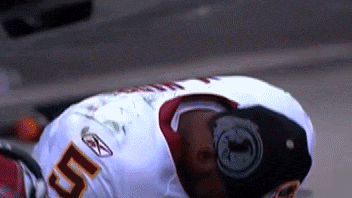

 Jeff Kopp (Courtesy of Jacksonville Jaguars)
Jeff Kopp (Courtesy of Jacksonville Jaguars) (Courtesy of Jacksonville Jaguars)
(Courtesy of Jacksonville Jaguars) Kopp's son's Pop Warner helmet (left); Kopp's NFL helmet from 1988.
Kopp's son's Pop Warner helmet (left); Kopp's NFL helmet from 1988.





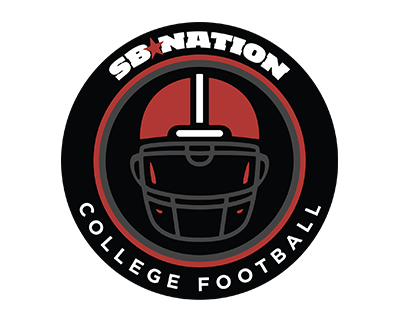









































































 (USA Today Images)
(USA Today Images) (Getty Images)
(Getty Images) (Getty Images)
(Getty Images) (Getty Images)
(Getty Images) (Getty Images)
(Getty Images) (USA Today Images)
(USA Today Images) (Getty Images)
(Getty Images)
 Getty Images
Getty Images USA Today Images
USA Today Images Getty Images
Getty Images
 Photo by Sam Riches
Photo by Sam Riches Photo by Sam Riches
Photo by Sam Riches Dennis Johnson, right, and Lawrence Garriques; photo by Sam Riches
Dennis Johnson, right, and Lawrence Garriques; photo by Sam Riches The outdoor training track at UTECH; photo by Sam Riches
The outdoor training track at UTECH; photo by Sam Riches
 Getty Images
Getty Images Getty Images
Getty Images Ron Shapiro
Ron Shapiro
 Otties William Brewer III, courtesy of the Brewer family
Otties William Brewer III, courtesy of the Brewer family Courtesy of the Choctaw Sun-Advocate
Courtesy of the Choctaw Sun-Advocate Courtesy of the Choctaw Sun-Advocate
Courtesy of the Choctaw Sun-Advocate Courtesy of the Choctaw Sun-Advocate
Courtesy of the Choctaw Sun-Advocate

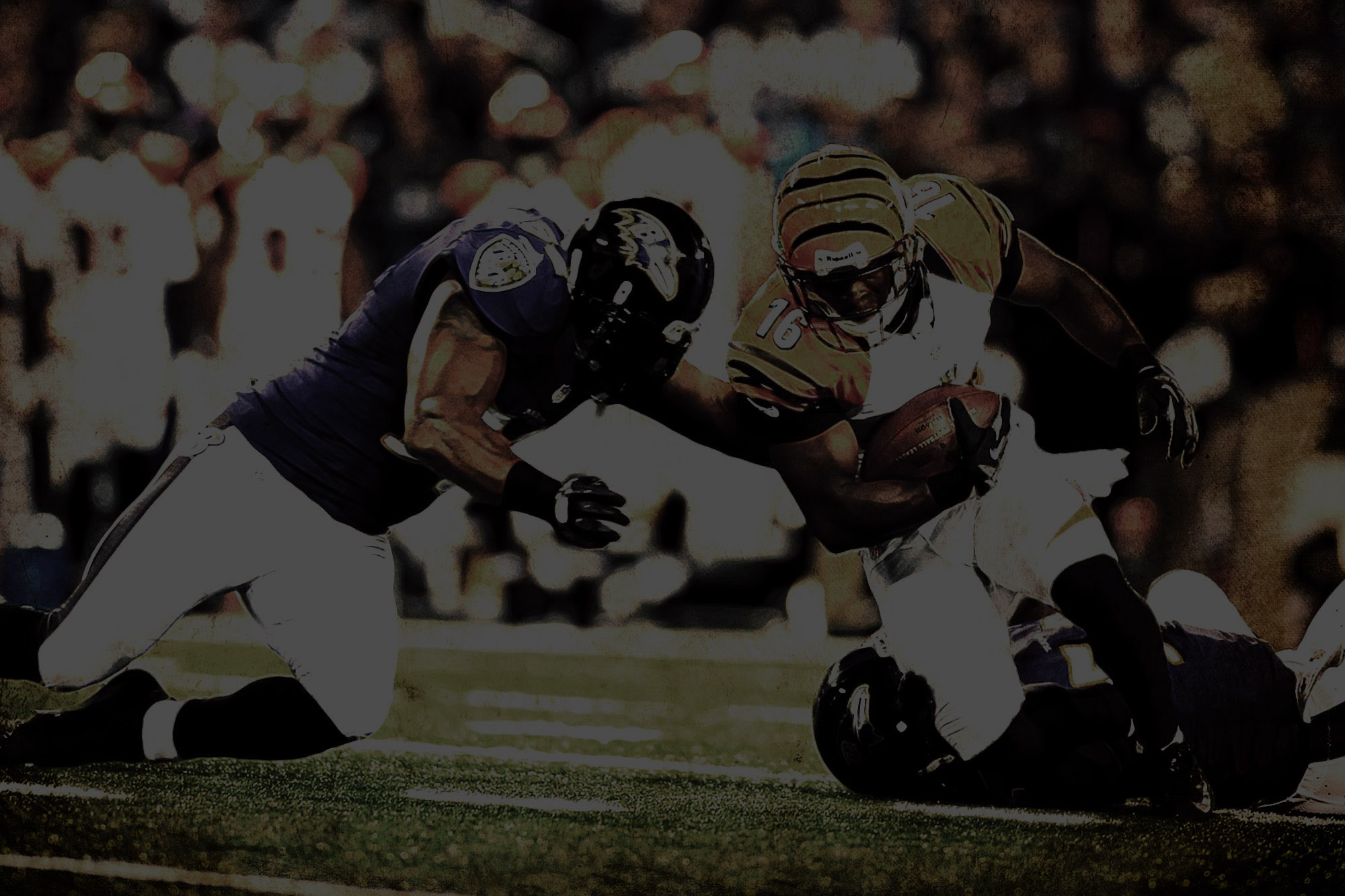



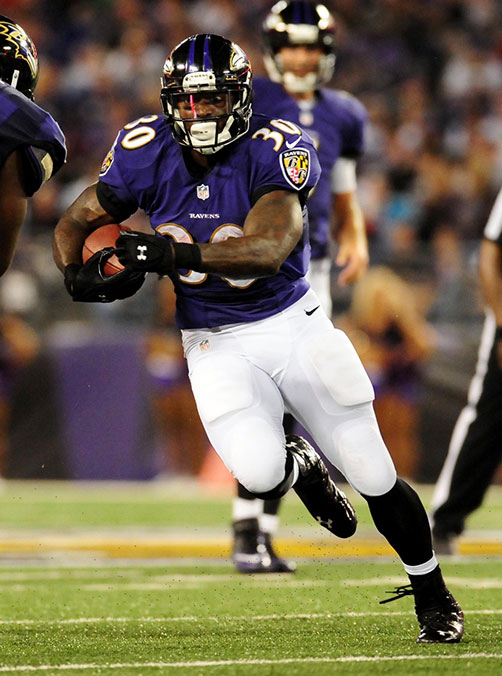
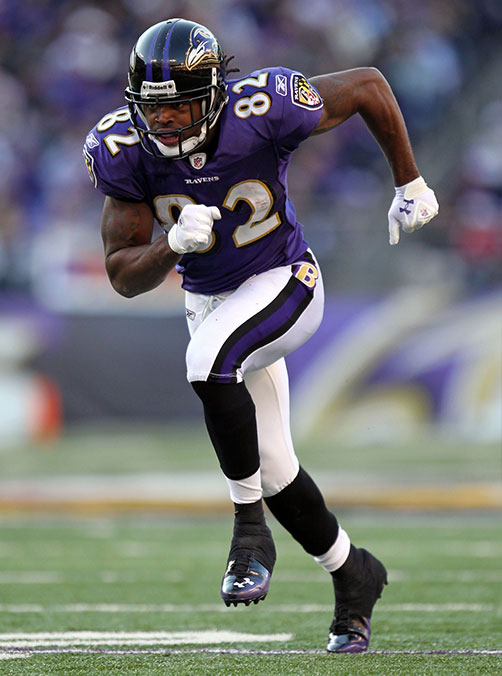







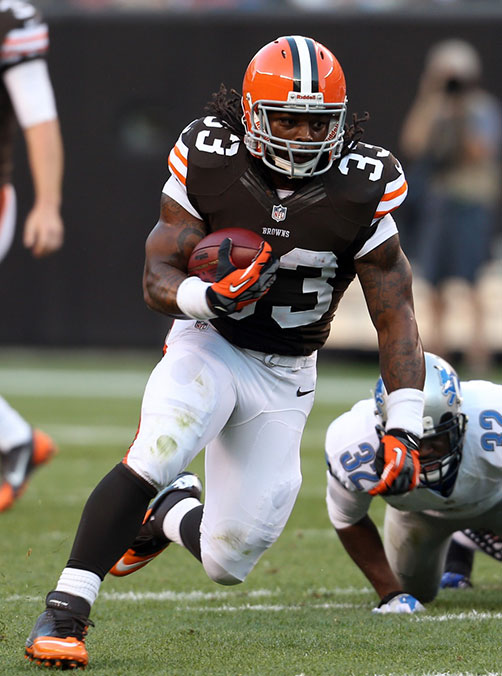
































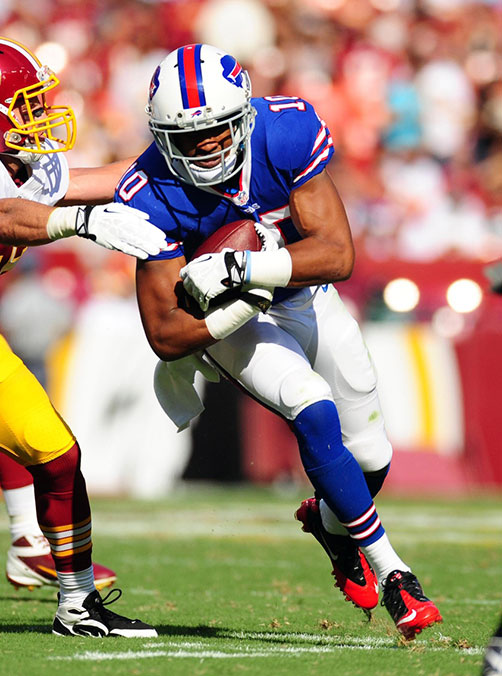





















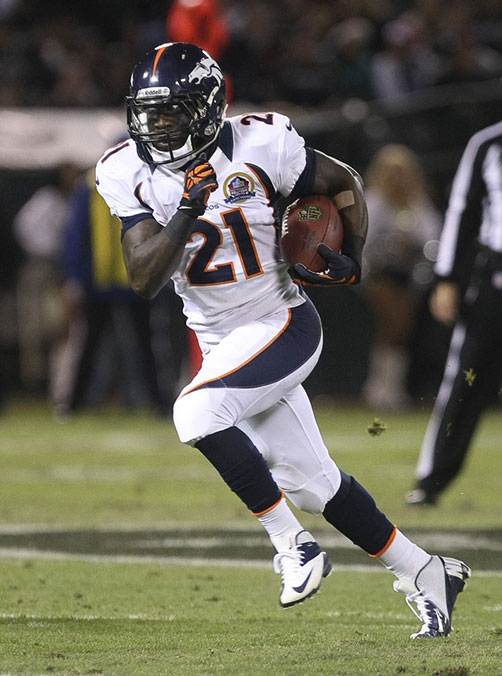





































































































 Getty Images
Getty Images Getty Images
Getty Images
 The Ravens bring eight into the box during the Super Bowl.
The Ravens bring eight into the box during the Super Bowl.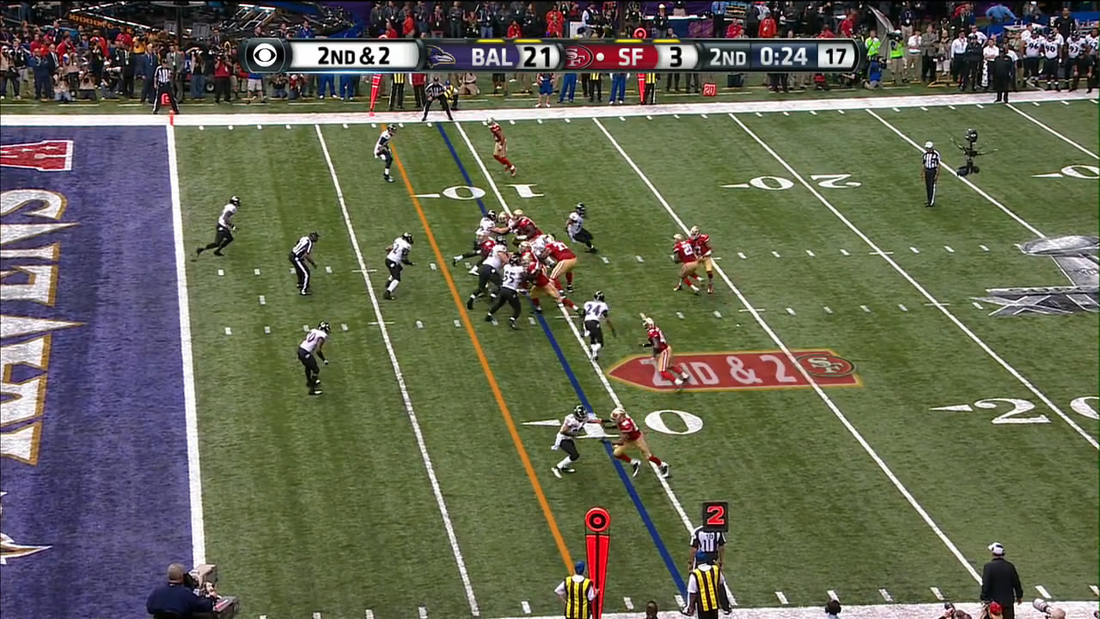 The Ravens blitz the slot corner (No. 24) and a linebacker to converge at the point of the handoff.
The Ravens blitz the slot corner (No. 24) and a linebacker to converge at the point of the handoff.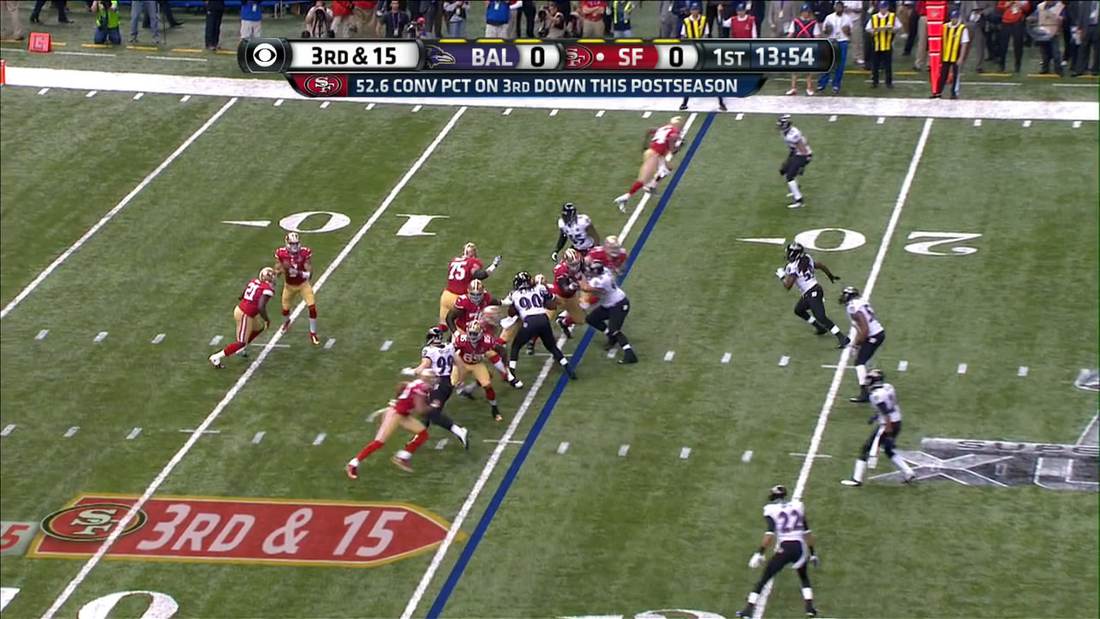 The Ravens' Paul Kruger (No. 99) attacks the backfield as the "overhang" defender.
The Ravens' Paul Kruger (No. 99) attacks the backfield as the "overhang" defender. The 49ers run a triple option with LaMichael James and Frank Gore in the backfield.
The 49ers run a triple option with LaMichael James and Frank Gore in the backfield.
 USA Today Images
USA Today Images

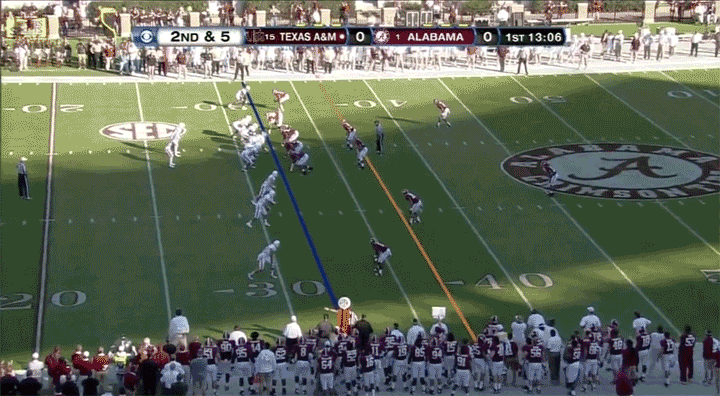
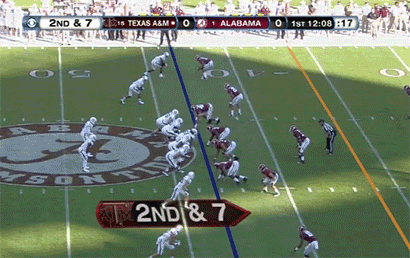
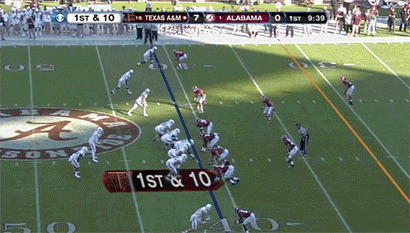
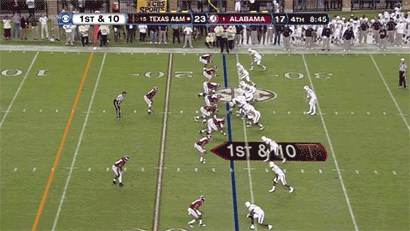
 Getty Images
Getty Images

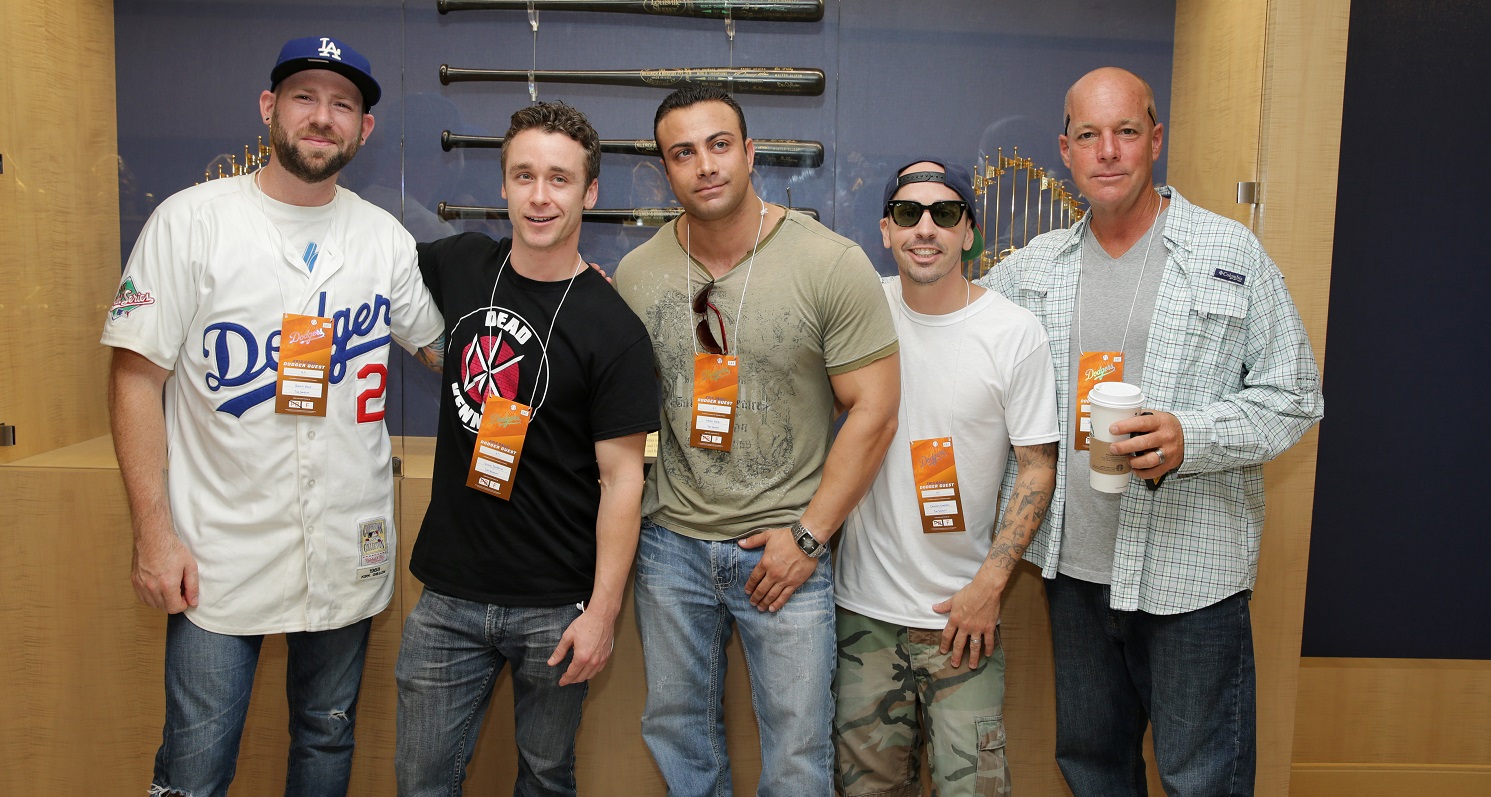 Grant Gelt ("Bertram"), Victor DiMattia ("Timmy Timmons"), Marty York ("Yeah-Yeah"), Chauncey Leopardi ("Squints"), David Mickey Evans (director)
Grant Gelt ("Bertram"), Victor DiMattia ("Timmy Timmons"), Marty York ("Yeah-Yeah"), Chauncey Leopardi ("Squints"), David Mickey Evans (director) DiMattia and York, who played Timmy Timmons and Yeah-Yeah.
DiMattia and York, who played Timmy Timmons and Yeah-Yeah.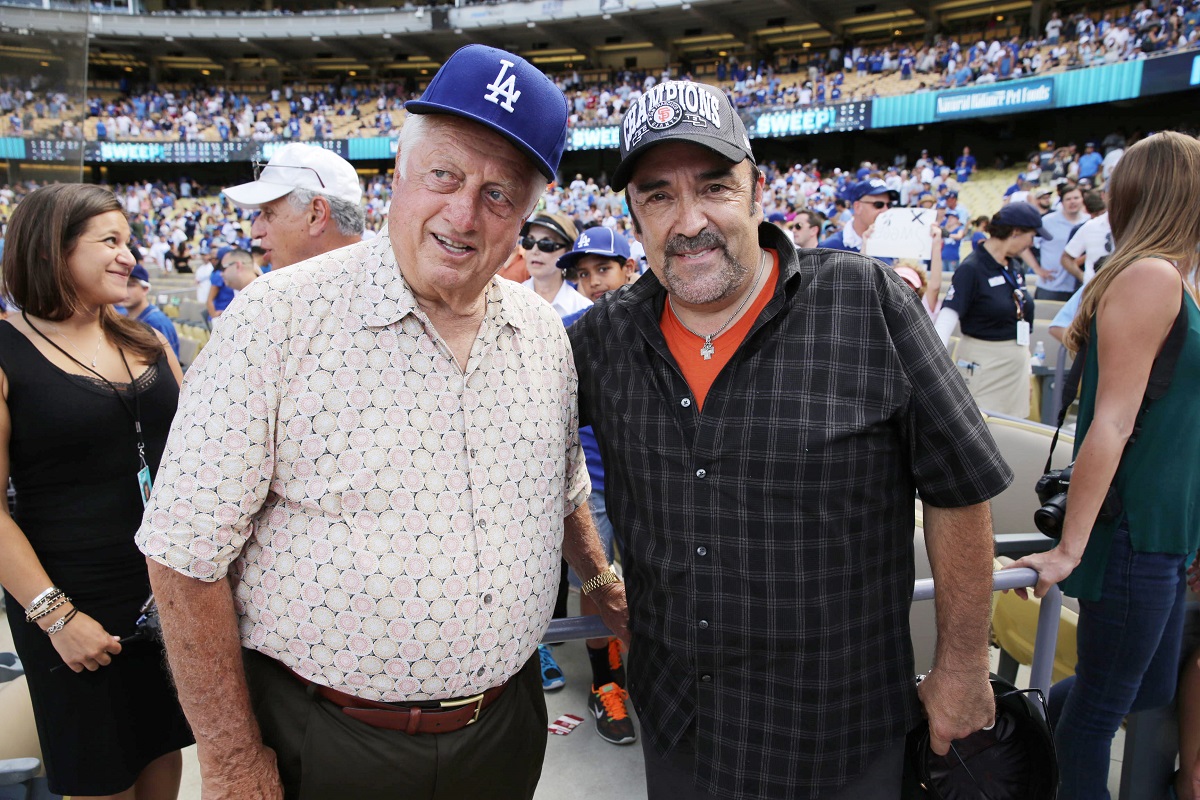 Tommy Lasorda with Daniel Zacapa.
Tommy Lasorda with Daniel Zacapa.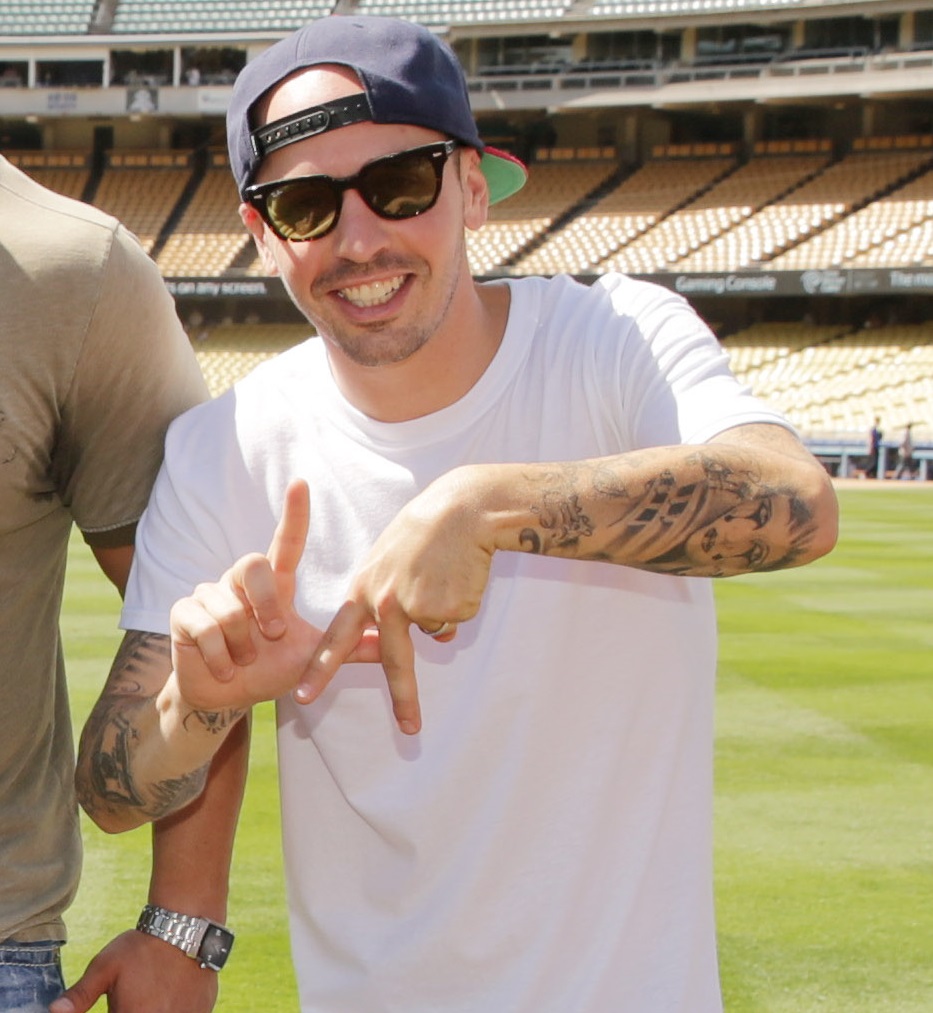 Leopardi, who played Squints.
Leopardi, who played Squints.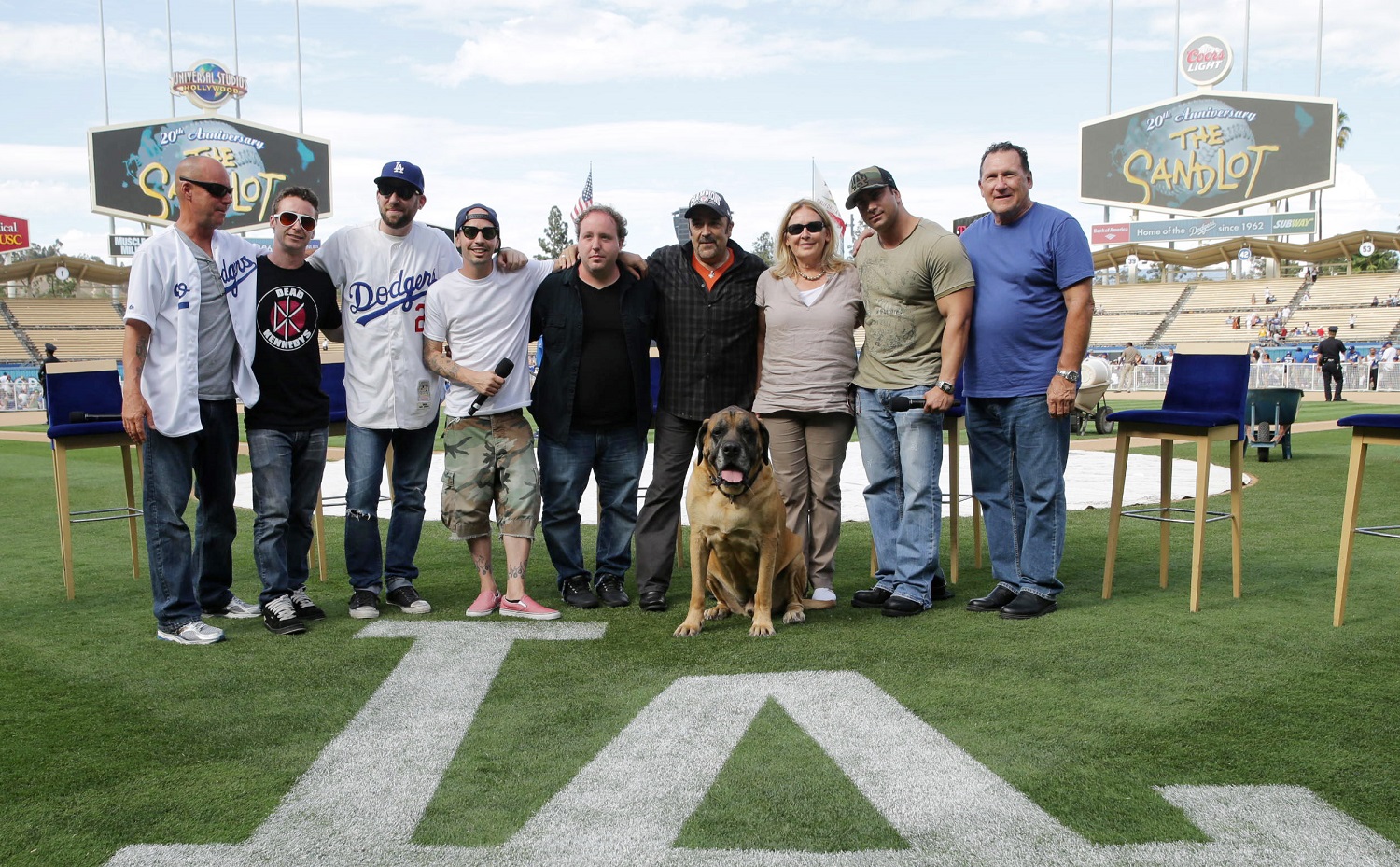 Evans (director), "Timmy Timmons", "Bertram", "Squints", "Tommy Timmons" (Shane Obedinksi), "Police Chief", Cathleen Summers (producer), "Yeah-Yeah", "The Babe"
Evans (director), "Timmy Timmons", "Bertram", "Squints", "Tommy Timmons" (Shane Obedinksi), "Police Chief", Cathleen Summers (producer), "Yeah-Yeah", "The Babe"











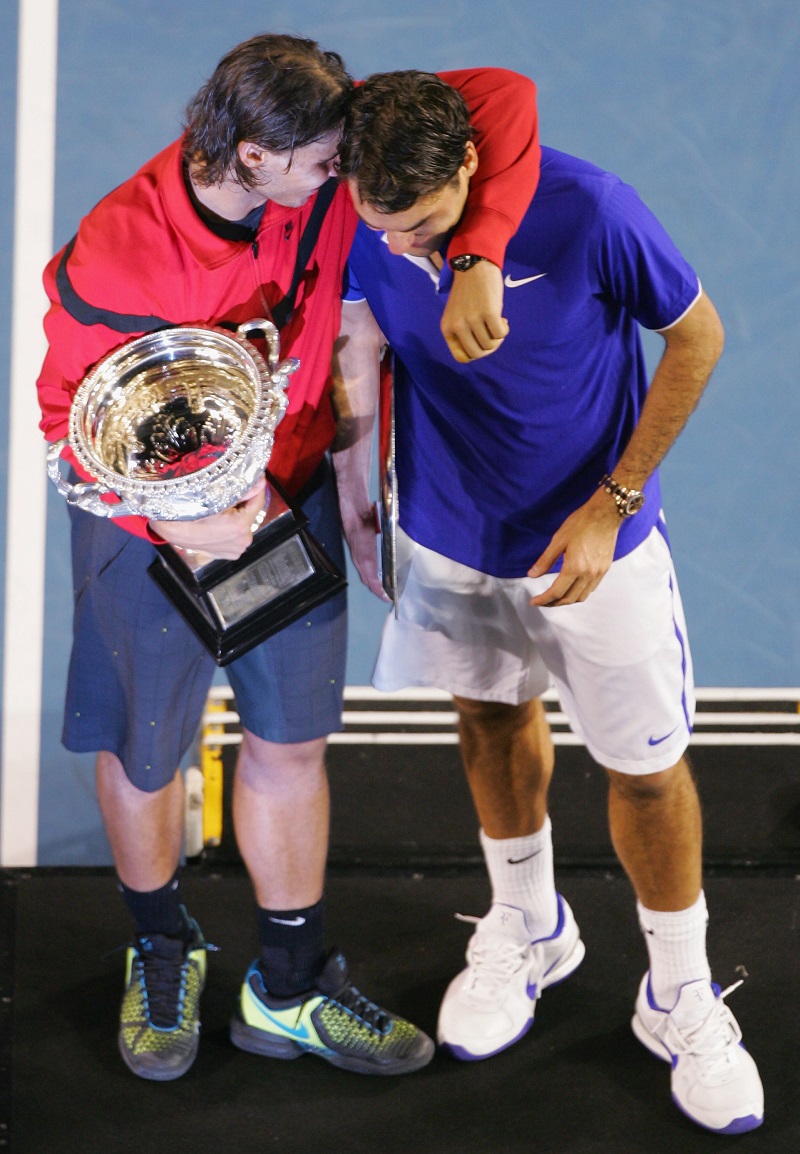














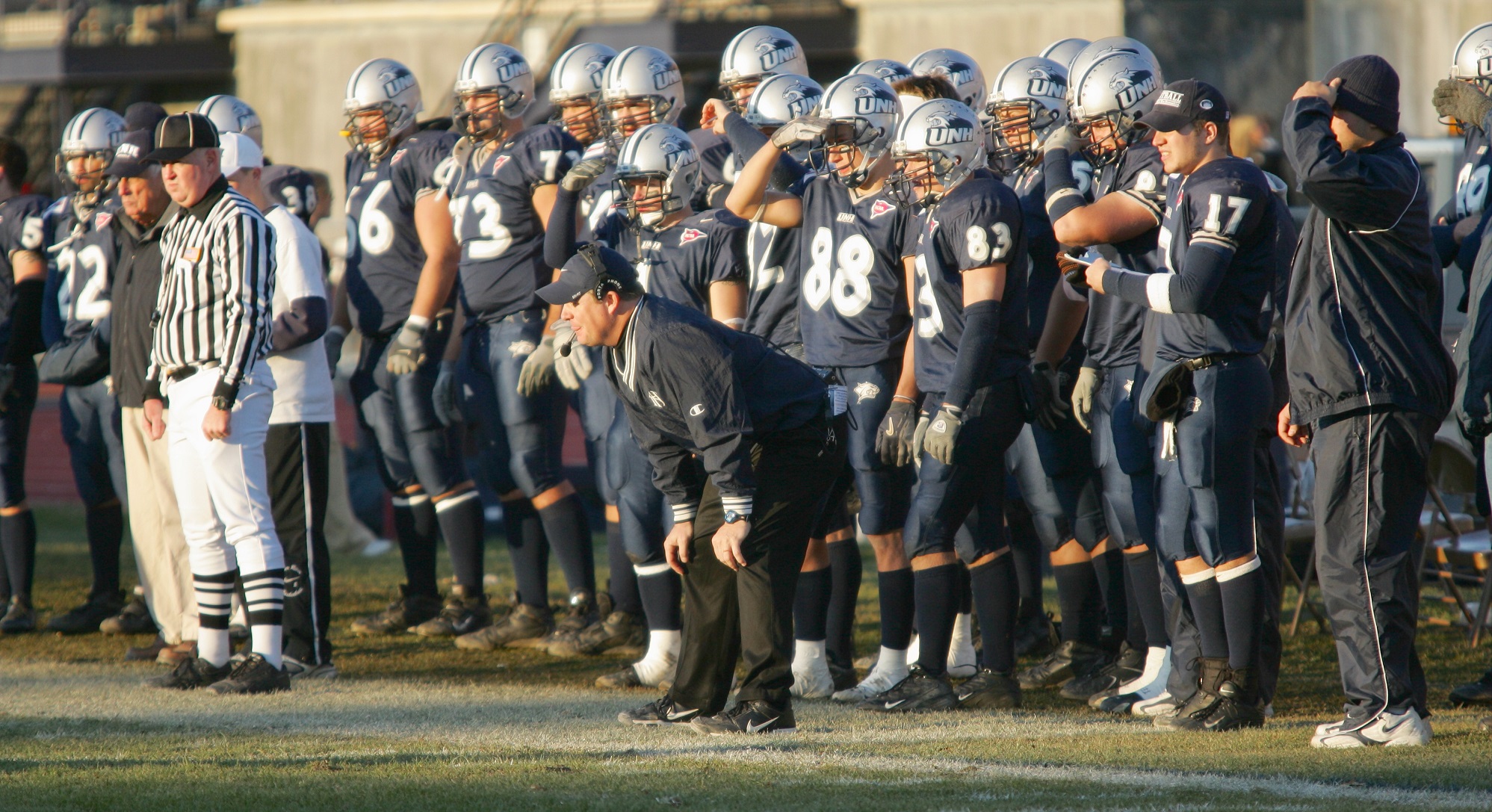 Courtesy University of New Hampshire
Courtesy University of New Hampshire USA Today Images
USA Today Images